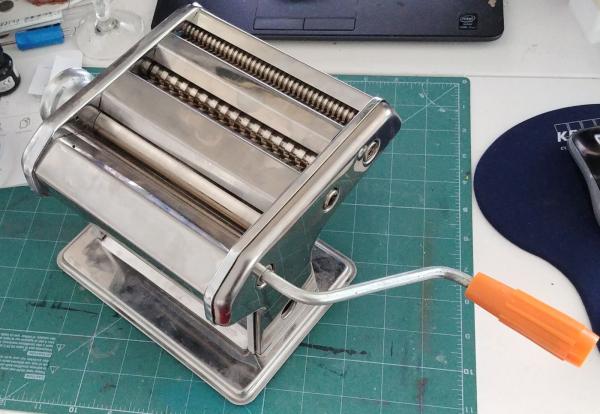Home › Forums › Painting in Tabletop Gaming › Texture and rolling pin basing › Reply To: Texture and rolling pin basing
I use the rollers heavily for about 6 years now. At first I was discouraged by the effects for very similar reasons as you describe. I couldn’t stand wobbly surface and bevelled edges on overly thick bases. So my process evolved in years to something like this (I have no pictures illustrating making of the bases themselves, but hope to describe it clearly enough):
1. Material: I use 50/50 mixture of plasticine (bought by kilos at artists shop) and Miliput (yellow) – this is what GSW recommend and I stand by this recommendation, material is soft enough when rolling and hardens just as any other Miliput, you can roll it very thin and it is not overly sticky.
2. Before rolling actual texture I prepare amount of material enough to create 30-40 25mm bases.
3. It is extremely important to always use either vaseline or as I do baby powder at each stage of using pins, otherwise you either mess pin or pattern (or both).
4. To achieve smooth, flat surface I pin out the paste using this machine:

This is macaroni machine, I bought it of e-bay or similar for some 10 Euro, PP included. It is brilliant as you can set thickness of the resulting paste (I usually do either 1 or 2 mm). When I bought it GSW had no silicon ring on offer, but now having both I wouldn’t use the rings instead of this machine (it is just too cool).

Above you can see difference between 1 (black primed bases) and 2 (painted bases) mm thicknesses.
5. Then I put the paste on flat piece of tin-foil (and let it stick to the bottom) and cover all the surface with baby powder and roll the pattern on. I usually put rubber rings on the pin (high of the paste thickness).
6. After the pattern is on the paste I cut the rings to create base toppers and then pick reaming paste cut-offs to reuse (make a ball put it back to the machine and repeat all the steps).
7. After I roll all the patterns I want I wait for an hour or two for the miliput to start harden but before it cures completely and then stick the toppers to the bases.
8. Before painting you need to wash the powder off the bases.
One last photo showing a topper made with the method above but put on a plastic disc (25mm) instead of a base.

I can’t say if above is best way to do it, but I’m happy with my results. Hope this may be of any use to you.





























![How To Paint Moonstone’s Nanny | Goblin King Games [7 Days Early Access]](https://images.beastsofwar.com/2024/12/3CU-Gobin-King-Games-Moonstone-Shades-Nanny-coverimage-225-127.jpg)









































